Results 2,501 to 2,510 of 12094
Thread: Anandtech News
-
01-09-13, 04:00 AM #2501
Anandtech: The Phantoms of NZXT
I recently reviewed the NZXT Phantom 820 and found it to be a remarkably excellent, intelligent case, so imagine my delight in learning that NZXT is following up that success with the Phantom 630. Over the past couple of years, NZXT has increasingly been carving out a niche as a case manufacturer that produces stylized, exceptionally feature-rich cases. As a former art student it's actually interesting to see that their products have an increasingly distinctive flavor to them. Some work is done by engineers. Some work has clearly been done by people with at least a little bit of a liberal arts education, people who are having fun with their jobs.
However you feel about the styling (and I did tell them I wasn't fond of the side window and grate, which uses the same style as the Phantom 820), it's hard to argue with what NZXT has on offer here. The Phantom 630 features absolutely everything the Phantom 820 did: custom illumination with a rainbow of color options, a built-in SD card reader (why does almost nobody else include this standard?), an internal 30-watt fan hub with built-in fan controller, USB 3.0 support, a switchable LED backlight for the rear port cluster and expansion slots, three removable drive cages that each feature one, two, or three drive sleds so you can include exactly the number of drive sleds you need, and support for multiple Kraken closed loop coolers. There are also toolless snaps, motherboard standoffs come pre-installed, there's a cabling channel in the motherboard tray, and the usual removable fan filters. I fully expect the Phantom 640 to include a "breakfast port," which produces absolutely fantastic omelettes with minimal preparation time.
...we will be getting the Phantom 630 in for review soon.
Less exciting but still impressive was the Hale90 power supply on display, which featured the usual modular cabling along with the kinds of stylistic touches (black accents on white) that I've come to expect from NZXT. Even the internal PCB is white. What the Hale90's interesting feature is an additional lead on the main ATX 24-pin power lead. This lead plugs into the Hale90 and informs the power supply exactly how much power is being drawn off of the main lead, and this is how the internal fan is controlled. Very cool.

More...
-
01-09-13, 04:00 AM #2502
Anandtech: Thermaltake Brings a Little Sophistication
For the most part I like Thermaltake, but generally they've been one of the holdouts producing glossy, ostentatious enclosures while the rest of the industry has been moving past those. So you can imagine my surprise when the producers of the Level 10 GT and its kin hit me with some more restrained designs.
While the new Chaser cases aren't all the way there, they're remarkably close. There are essentially three models, with the top A71 pictured above featuring four USB 3.0 ports and a hotswap bay. From there they scale down to the smaller A41 and A31, but either way it's a pleasant change of pace. Where things get even more pleasant is their new Urban series enclosure.
The Urban series enclosures are geared for silence, and they include fan control and acoustic padding standard. They're stylishly restrained and very attractive (at least in my opinion), but it remains to be seen if they'll suffer the same pyrrhic victories most acoustically-engineered cases do: sound dampening material and poor airflow resulting in internal fans having to run faster (and more audibly) in the process. It's a delicate balance I think only Nanoxia's Deep Silence 1 has really mastered in recent years, so we'll see.
Thermaltake was also showing off more power supplies and again these are incremental updates from the previous year, basically bumping up efficiencies and efficiency certifications.
Finally, I had a chance to look at their CPU cooling solutions. The Water 3.0 series runs the same gamut that Corsair's own Hydro series do (240mm radiator, thick 120mm radiator, thin 120mm radiator), but Thermaltake is using current-generation Asetek instead of CoolIT hardware. They're also replacing their Frio series air coolers with new Nic series coolers which are designed to reduce footprint and avoid memory heatsink clearance issues while providing the same or better performance than the old Frio line. Hopefully we'll be able to get some of these coolers in for testing.

More...
-
01-09-13, 05:01 AM #2503
Anandtech: Asustor 6 Series: A Fresh Approach in the NAS Market
We had the chance to meet up with Asustor at CES yesterday. Reviews of some of their offerings had popped up on various websites, and my initial impression was that Asus was aiming to get a toehold in the fast growing NAS market. I wasn't expecting much, but I was in for a pleasant surprise.
Asustor was founded in August 2011 as an affiliate of the Asus group. It has around 70 employees, out of which 60 are in R&D, with a majority involved in software / firmware development. Even though the company is pretty new, the employees trace back their roots to QNAP and Synology.
Currently, Asustor has one NAS product family, the 6 Series. All the models use the Atom D2700 2.13 GHz dual core processor with 1 GB of SO-DIMM DDR3. It is possible for end-users to upgrade the DRAM up to 3 GB. The currently available models include 2,4,6 and 8-bay models AS-60xT, where x is the number of bays, and T represents the tower form factor.
Towards the end of this month, Asustor will also introduce rackmount models AS-604R (1U form factor) and the AS-609R (2U form factor) with 4 and 9 bays respectively. These models will also have 1 GB of DDR3 DRAM and the D2700 processor only. I find it hard to understand how they can manage to do RAID calculations across 9 drives with just an Atom CPU. We are trying to confirm whether there is any hardware RAID involved.
 
All the 6 series models have 2x GbE links, 4x USB 2.0, 2x USB 3.0 and 2x eSATA to go along with the HDMI display output port. While the 2-bay unit has an external 60W power adapter, the rest of the tower models have an internal 250W PSU. The rackmount units have internal redundant power supplies (250W for the AS-604R and 350W for the AS-609R).
QNAP and Synology have been around for more than 10 years, while Asustor is relatively new. Starting from a fresh slate migh help Asustor provide modern consumers with a better suited. However, the drawback is that Asustor hasn't had time to deliver all the features available in the Synology or QNAP units. Being Atom-based units, the 6 series isn't really a candidate for value propositions. 1 GB of DRAM also sounds a bit low for multi-bay NAS units based on the Atom processors. In comparison, the LaCie 5big NAS Pro has 4 GB of DRAM and is based on the same Atom processor (D2700).
In terms of software and UI, Asustor has decided to repliace the iOS experience with similar icons and layout. Most commonly required functions are easily accessible. A SDK is available for developers to produce custom apps. For example, Boxee has been ported over and can be used to decode and send HD video out thrugh the HDMI port (similar to how Thecus has developed XBMC for their Atom D2700 based NAS platforms). A private cloud solution is enabled using the Asustor apps for Android and iOS as well as Asustor's own dynamic DNS service. a Dropbox app is available to bring content stored in your Dropbox account on to the NAS and keep it synced. Unlike other NAS units with volume level encryption, Asustor has opted for folder level encryption.All virtualization needs are available with Citrix, VMWare and Hyper-V support.
On the whole, the Asustor 6-series looks like a well-built NAS unit with an effective and easy to use OS in the Asustor Data Master (ADM). Reliability and performance are aspects on which we will get more information from user reports and detailed reviews in the future. I am also looking forward to Asustor expanding into the value market segment in the future.

More...
-
01-09-13, 10:30 AM #2504
Anandtech: T-Mobile Announces AMR-WB (HD Voice) Calls Active on its Network
Last night at CES 2013, T-Mobile CTO Neville Ray announced that AMR-WB (Adaptive Multi Rate Wideband) was enabled on the operator's network, instantly allowing capable phones to place higher quality voice calls over the cellular network between T-Mobile customers. This announcement makes T-Mobile the first GSM/UMTS based network in the US to enable AMR-WB, but not the first operator in the US to deploy "HD Voice," as Sprint has been rolling out 1x-Advanced's EVRC-NW (EVRC-Narrowband Wideband) wherever their network modernization and LTE upgrades are.
HD Voice enables calls with a much wider dynamic range. AMR-WB is a direct successor to AMR-NB (narrowband) and offers higher frequency bandwidth of up to about 8 kHz (16 kHz sampling) as opposed to AMR-NB's 4 kHz. I'm unclear what bitrate or coding mode T-Mobile US is using, however I'd be willing to suspect that T-Mobile has probably gone for enabling the full AMR-WB range of bitrates. I have to say I'm impressed with T-Mobile US' constant leadership over AT&T with UMTS upgrades in the US. AT&T currently runs AMR-NB at 5.9 kbps for comparison, not even the full allocation AMR-NB bitrate.
This upgrade was made active last night, and all mobile-originated and mobile-terminated calls on T-Mobile between phones that support AMR-WB should now use the mode, subject to other factors that normally affect multirate codecs such as coverage profile and network load. T-Mobile has called out the Samsung Galaxy S 3 and HTC One S as being examples of two such phones that definitively already include AMR-WB support, although any phone that exposes the capability on network attach should work just fine.
I placed a number of calls between T-Mobile users last night to try and gauge any perceptible difference. I've previously heard AMR-WB demos and run loopback calls on the Anritsu base station emulator, and there is a perceptible difference. I originated a call on a Nexus 4 and terminated it on a Nexus 4 with both on T-Mobile, which sounded excellent, and then between an iPhone 5 (attached to PCS WCDMA here in Las Vegas) and a Nexus 4, which also sounded very different than an AT&T AMR-NB originated and terminated call. I need to do more testing back home, but T-Mobile's claims that this is live right now and working seem credible, calls sounded crisp and much more intelligible than some of the AMR-NB calls I've been on.
Source: T-Mobile

More...
-
01-09-13, 11:00 AM #2505
Anandtech: HGST/G-Technology Touro, G|Drive, and G|RAID
We met with HGST at their hotel suite and were interested to hear their plans now that they’ve been acquired by WD. Western Digital bought HGST (who had previously purchased G-Technology), and with two hard drive companies now merged we wanted to find out what the plan was going forward. Since Western Digital has been primarily focused on the consumer side of the storage market, their acquisition of Hitachi/HGST makes sense as HGST has focused more on the enterprise side lately. Ultimately, the decision was made to keep HGST as a standalone business. Case in point is the G-Technology lineup from HGST, which is our focus here.
HGST has a very strong position in the enterprise and mobile space. The industrial design is one element where all of the G-Technology offerings are substantially higher quality than what we typically see in the consumer market. The enclosures are all durable and have a solidity and weight to them that you just wouldn’t get from a plastic enclosure. The casings are all aluminum, of varying thickness, with higher end products offering multiple inputs, multiple drives, and improved cooling. The G-Technology product line has always been targeted at the creative professionals—the original version came out early in the Final Cut Pro days in 2004, and the need to edit HD video was a major impetus—consider that one hour of raw 4K video will suck down around 860GB of storage space, which is why most video editing continues to rely on conventional storage.
G-Technology products are used a lot by independents doing shorts, commercials, etc. and that eventually caught the attention of Apple. With their success in that market, they’ve begun targeting premium consumers. Similarly, with tablets becoming a major thing, HGST looked at how that would affect the G-Technology line and found that it continued to be complementary.
Digital video and digital workflow is growing and they have creative professionals that are wanting to take their initial video off flash drives, make two copies—one to send out for post-production/editing/etc. and one as a backup—and they need a lot of storage. HGST mentioned a couple of shows that use their products, including SNL and Gold Rush. The total quantity of video for the latter is typically 180+ hours of raw footage for every one hour episode, so you can quickly see how a twelve episode season needs massive amounts of storage. Basically, they’re able to deliver high capacity with good streaming performance for digital video workflows. The single drive solutions can deliver up to 150MB/s, dual drives are pushing peak data rates of over 300MB/s, and the quad-drive solutions are able to deliver up to 500MB/s. Random access performance is obviously not a strong point for hard drives compared to SSDs, but as capacity goes up on SSDs we’re also seeing a drop in number of program-erase cycles, and raw capacity is still much lower. The basic summary then is that for now, G-Technology continues to focus on conventional storage.
Starting at the lower end, HGST’s Touro brand is a consumer oriented (“mainstream”) brand that consists primarily of single-drive 5400RPM offerings (though they’re now moving to 7200RPM as well). The lineup consists of external devices with 2.5” and 3.5” hard drives. Over the past couple of years with USB 3.0 now displacing USB 2.0, the need for faster drives is coming and there’s a reason to go beyond 5400 RPM—keep in mind that USB 2.0 maxed out at around 38MB/s, so even 5400RPM drives are easily able to saturate that bus. The drives start at 500GB models, with the largest 3.5” option being a 4TB, 5 platter design. In the 2.5” enclosure, the largest drive is a 1TB 7200RPM. HGST is proud of the fact that this is currently the only 9.5mm 7200RPM 1TB drive shipping, with 32MB cache—other companies have 1TB models with 11.5mm drives. The Touro brand (Desk Pro and Mobile Pro) is pre-formatted for Windows and comes with a 3GB cloud backup free.
Stepping up to the G|Drive lineup, all of the drives are 7200RPM models and the size and cooling capabilities of the enclosures are all clearly improved. Where the Touro products all used USB 3.0 connections, G|Drive adds Firewire 800, eSATA, and on some models Thunderbolt (though of the enclosures shown, only one of the G|RAID offerings had Thunderbolt ports). Again, capacities range from 500GB up to 4TB. The industrial design of the G|Drive and G|RAID products is basically the same, with the difference being the support for multiple drives in the G|RAID enclosures. The 2-drive models come pre-configured for RAID 0, with RAID 1 also supported, while the 4-drive enclosures also support RAID 5 (though in some cases that requires a separate PCIe card in the host PC).
One of the topics we also discussed with HGST was the potential for benchmarking this sort of device. Obviously, our SSD testing procedures are not oriented towards editing raw HD video, and with random access testing any hard drive will fall well short of even mediocre flash storage. If there’s interest in increasing our testing of this sort of products, or if you have suggestions on workflows that you’d like to see us test, please let us know in the comments.
Gallery: HGST/G-Technology Touro, G|Drive, and G|RAID_thumb.jpg)
_thumb.jpg)
_thumb.jpg)
_thumb.jpg)
_thumb.jpg)
_thumb.jpg)

More...
-
01-09-13, 01:30 PM #2506
Anandtech: Tactus Gives Touchscreen Users Something To Touch
 
One of the hardest leaps to make in entering this modern era of mobile phones was the idea of using a touchscreen keyboard. Losing our beloved keys was anathema to Blackberry and Treo users. But what if you could get a little of that back? Tactus has been exploring that idea almost since the iPhone’s first announcement. By combining a small pump and an array of microfluidic channels and chambers on a plastic panel, they can bring topology to otherwise flat touch screens. The keys raise on demand when the keyboard is called, and will disappear when the keyboard is no longer needed. The technology is still very much a work in progress. The demo device they showed off has a single portrait keyboard configuration, and while raising takes a quick second, evacuating the chambers takes considerably longer. Dr. Craig Ciesla, founder and CEO of Tactus , says reliability concerns have largely been dealt with and they’re well on their way to bringing the technology to phone sized devices, as well as refining their larger offerings. The technology is still in its earliest days, but we’re excited to see where it gets. 
Gallery: Tactus Gives Touchscreen Users Something To Touch


More...
-
01-09-13, 02:00 PM #2507
Anandtech: Qualcomm and DTS Team-up For Mobile Surround Solution

Qualcomm’s already made waves here at CEs with their announcement of the new Snapdragon line-up, and to emphasize the point that Snapdragon 800 is more than just Krait 400, they’ve got several demonstrations set-up at their booth. We got a chance to step into their Snapdragon Theater to see what the new SoC brings to media playback. 
 
We ran through several demos, but the key message was this: Snapdragon 800 is prepared for future technologies. Previewing 1080p content with 7.1 Surround Sound output over HDMI was smooth and compelling. Playback of 4k content, was equally impressive. But the real surprise was a collaboration with DTS, for something they’re calling Headphone:X. An audio demonstration is played out of each speaker in the 7.1 set-up. We then slipped on headphones and the same demonstration was played through them. The effect was entirely convincing. Slipping the headphones off mid-demo revealed that their was no mistake, the speakers were silent. All the audio was coming through the phones. 
 
At present, Headphone:X is implemented on the CPU, though they have other test devices where it is run through their updated Hexagon DSP. Their new video decode hardware is capable of up to 4k footage at 30 fps, and that is only a fraction of all the updates they’re leveraging in Snapdragon 800. All of their demos show off the potential of their new silicon, not just to us, but also to hardware partners who decide whether to implement all the features they have to offer. We can’t wait to see who does, and to explore the limits of these new SoCs. 

More...
-
01-09-13, 02:30 PM #2508
Anandtech: Mushkin Announces 960GB 2.5" Chronos SSD
Continuing our CES coverage, Mushkin has announced a 960GB model of their popular Chronos SSD. Details are very scarce at this point but I was able to find out that it's made out of two 480GB SSD that run in RAID 0 mode, similar to OWC Mercury Electra 3G MAX that we reviewed a few months ago. Assuming that the 960GB version retains the same main components as other Chronos models, we are looking at two SF-2281 based SSDs with asynchronous NAND. Unlike OWC's 960GB Mercury, Mushkin's press release claims that the Chronos is a SATA 6Gbps drive, although actual performance figures haven't been released yet. Pricing and availability are also to be announced. 
It looks like 128Gb NAND dies are still at least months away from widespread availability, which is why manufacturers have to rely on using more creative methods to increase the maximum capacities. Once 128Gb dies become available, we should see more ~1TB SSD since existing designs can be used provided that the firmware supports the new NAND (16KB page size and other minor tweaks). 

More...
-
01-09-13, 04:00 PM #2509
Anandtech: Intel Haswell GT3e GPU Performance Compared to NVIDIA's GeForce GT 650M
Haswell isn't expected to launch until the beginning of June in desktops and quad-core notebooks, but Intel is beginning to talk performance. Intel used a mobile customer reference board in a desktop chassis featuring Haswell GT3 with embedded DRAM (the fastest Haswell GPU configuration that Intel will ship) and compared it to an ASUS UX15 with on-board NVIDIA GeForce GT 650M. 
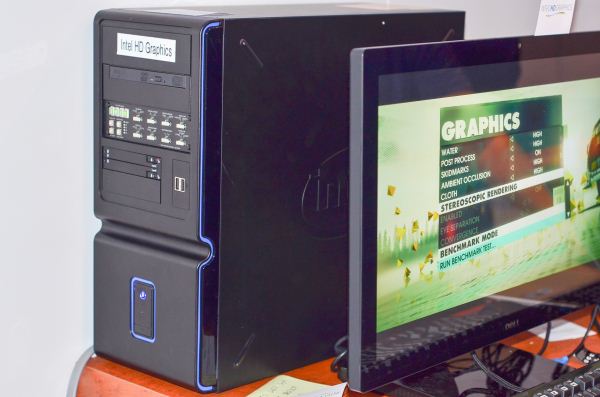
Despite the chassis difference, Intel claims it will be able to deliver the same performance from the demo today in an identical UX15 chassis by the time Haswell ships.
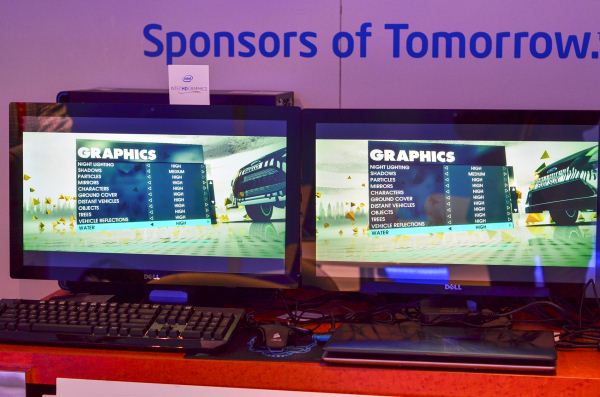
The video below shows Dirt 3 running at 1080p on both systems, with identical detail settings (High Quality presets, no AA, vsync off). Intel wouldn't let us report performance numbers, but subjectively the two looked to deliver very similar performance. You can be the judge using the video below:
Intel wouldn't let us confirm clock speeds on Haswell vs. the Core i7 (Ivy Bridge) system, but it claimed that the Haswell part was the immediate successor to its Ivy Bridge comparison point. As proof of Haswell's ability to fit in a notebook chassis, it did have another demo using older Haswell silicon running Call of Duty: Black Ops 2 in a notebook chassis. Haswell GT3e's performance looked great for processor graphics. I would assume that overall platform power would be reduced since you wouldn't have a discrete GPU inside, however there's also the question of the cost of the solution. I do expect that NVIDIA will continue to drive discrete GPU performance up, but as a solution for some of the thinner/space constrained form factors (think 13-inch MacBook Pro with Retina Display, maybe 11-inch Ultrabook/MacBook Air?) Haswell could be a revolutionary step forward.
More...
-
01-09-13, 04:30 PM #2510
Anandtech: Samsung Announces Exynos 5 Octa SoC - 4 Cortex A7s, 4 Cortex A15s
Earlier this morning Samsung announced a new eight core SoC and the spiritual successor to the Exynos 5250 "Exynos 5 Dual" called the Exynos 4 Octa (Exynos 5410?). This new SoC combines four ARM Cortex A15s and four ARM Cortex A7s, which is pretty much ARM's exact big.LITTLE reference design designed to enable either context hotplugging between the lower power, lower performance A7s and the higher power, higher performance A15s. GPU as far as I know remains a Mali T-6xx series, I'm not certain which one, however.
This entire SoC is being built on Samsung's new 28nm HK-MG process, as opposed to the 32nm HK-MG process for Exynos 5 Dual and Exynos 4 successors. This half node shrink should offer a die size and space savings, but obviously not nearly as much as a full node, likely on the order of 15% based on Samsung's own diagram. No word quite yet on clocks.
Gallery: Samsung Announces Exynos 5 Octa SoC - 4 Cortex A7s, 4 Cortex A15s




More...
Thread Information
Users Browsing this Thread
There are currently 13 users browsing this thread. (0 members and 13 guests)




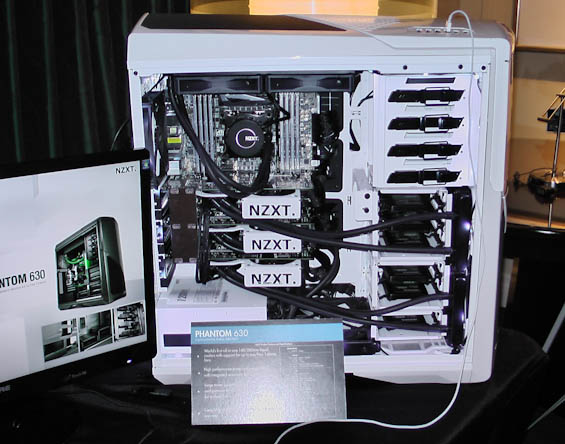



 Quote
Quote
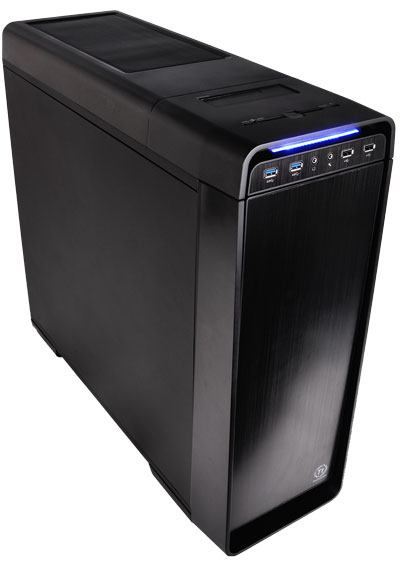

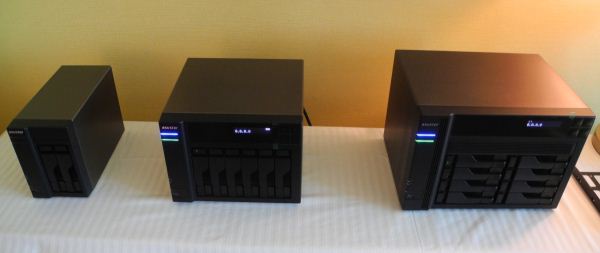



_575px.jpg)
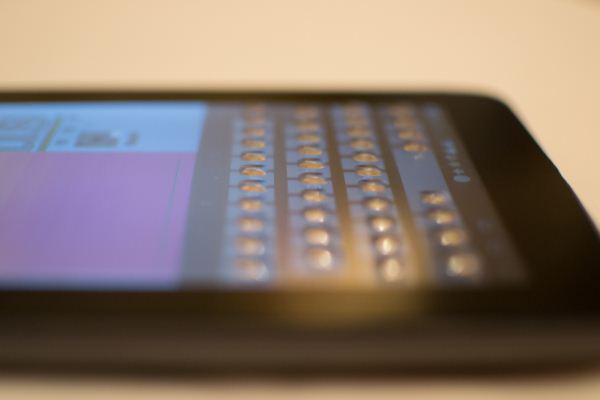
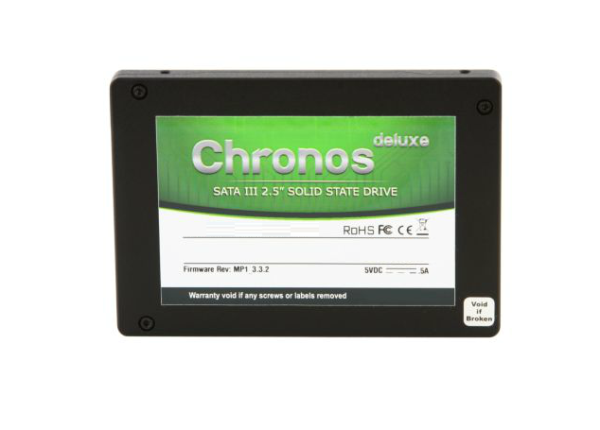
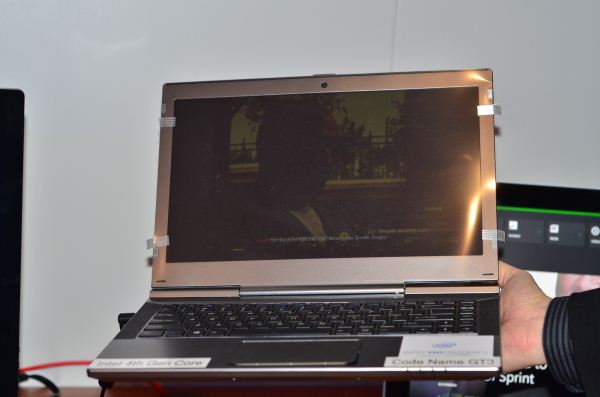
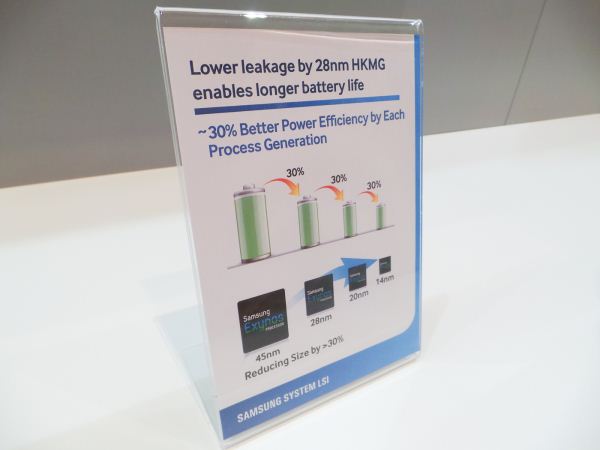
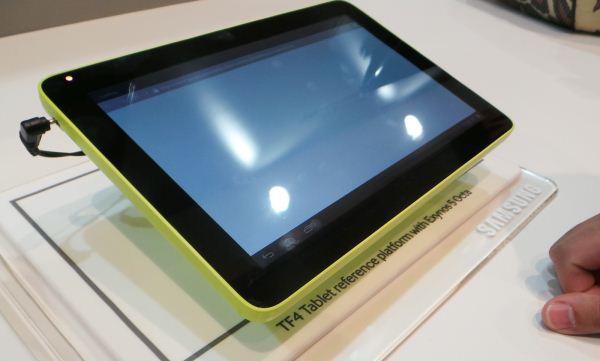
















Bookmarks